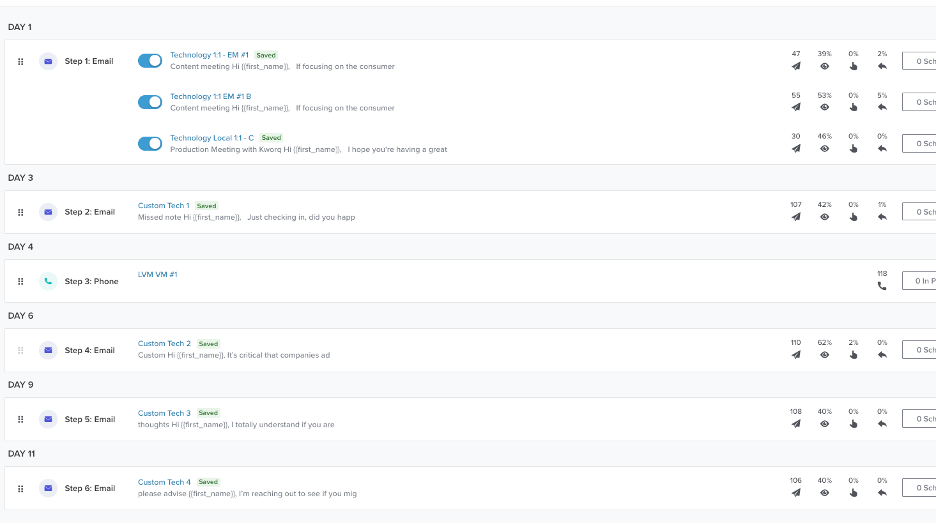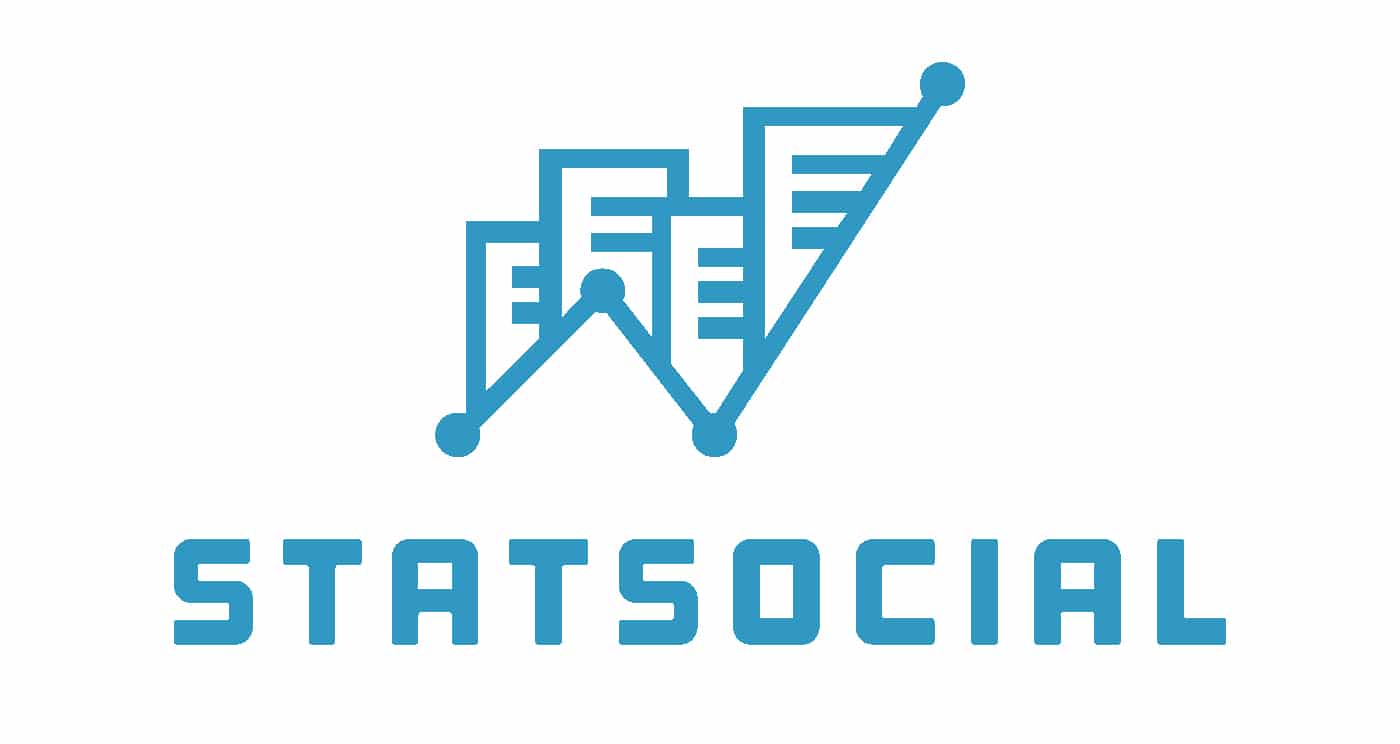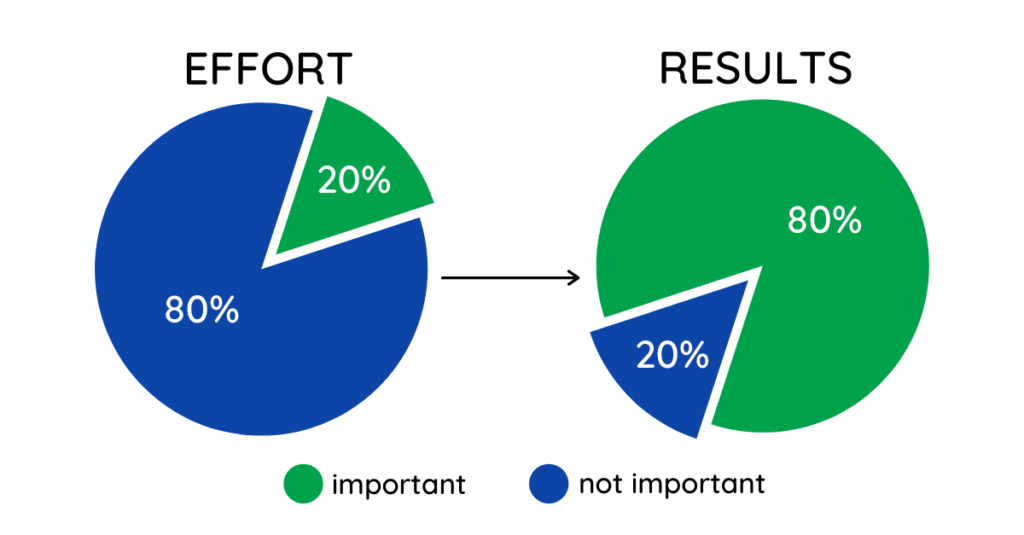From figuring out this whole AI thing, keeping up with the ever-growing demand for integrated tools and strategies, and the big one, consistently adding value to our client relationships– there are a variety of areas sellers need to navigate in the new year to remain competitive.
That’s where this blog comes in – think of it as your friendly guide to help you prepare to navigate what’s on the horizon in 2024. We’ll dive into the trends that are reshaping our industry, like understanding why brands might be breaking up with agencies more often, and how the rise of AI in marketing is changing the game.
What to Expect from Brand Marketers in 2024
1. Brands Will Be Replacing More Agency Partners
A new marketing relationship survey indicates that a rising number of brands are unsatisfied with their existing agency partners.The report indicates that 55% of brand marketers who responded are considering a change of agency within the next six months. Why? According the the survey, top reasons including:
- Dissatisfaction with value: Brands are increasingly dissatisfied with the value provided by their current agencies. This dissatisfaction is a primary factor driving brands to consider changing their agency partners.
- Issues with delivery: Brands are also unhappy with the delivery of services by their agencies. This includes aspects like the timeliness, quality, and effectiveness of the services provided.
- Agency-client disparities: There is a significant disparity between the perceptions of brands and agencies regarding the reasons for ending agency-client relationships. While brands cite dissatisfaction with value and delivery as top reasons, agencies underestimate these factors.
- Changes in strategic needs: While agencies are recognized for bringing strong strategies, they are perceived as overcharging for their services. Brands are seeking partners who can offer both strategic excellence and cost-effectiveness.
- Chemistry and professionalism: For brands looking to select a new agency partner, chemistry and professionalism have emerged as important aspects. This indicates a need for agencies to align more closely with the culture and values of their clients.
- Demand for specific services: There is an increased demand for specific services like content creation and video production, suggesting that brands are looking for agencies with particular capabilities in these areas.
2. Acquisitions and Consolidation Will Increase Pressure
Boutique and niche service offerings might run into a bit of more competition going into the new year as agency holding companies continue their acquisition spending sprees. This gobbling up of the market share has been inspired by a multitude of factors, including:
- Client demand for integrated services: The consolidation trend is largely driven by client demands for integrated, simplified service offerings. Agencies are responding by creating larger, more comprehensive entities that can offer a range of services under one roof, making them more attractive and efficient partners for brands.
- AI and tech integration: Agencies are heavily investing in AI and technology, focusing on measurement and insights. This trend is driven by advertisers’ demands for more robust analytics and validation of their campaigns’ effectiveness. Major acquisitions, such as Omnicom’s purchase of Flywheel and Stagwell’s acquisition of Left Field Labs, emphasize the growing importance of digital commerce solutions and AI in marketing.
- Influencer and social marketing emphasis: There’s a notable shift towards integrating influencer and social marketing capabilities. With the influencer market and social media spending growing rapidly, major holding companies are acquiring specialized agencies in this area. These acquisitions, such as WPP’s purchase of Goat and Stagwell’s acquisition of Movers+Shakers, show that a strong social and influencer presence is essential for modern advertising campaigns.
- Streamlined financials and full-service models: Brands are demanding more streamlined, integrated agency models. This has led to mergers aimed at simplifying structures and offering comprehensive services. Examples include WPP combining VML, Y&R, and Wunderman Thompson into VML, and M&C Saatchi’s restructure to combine multiple subsidiaries. This consolidation aims to make agencies more appealing and easier to work with for large clients.
- Increased focus on detailed reporting and campaign measurement: Recent acquisitions indicate a future trend where advertisers will demand more detailed reporting and precise campaign measurement. The emphasis is shifting from creative novelty to data-driven insights and analytics.
- Adaptation to the creator economy: The integration of influencer and social marketing arms within agencies reflects an adaptation to the creator economy. This approach allows brands to engage with audiences in more authentic and creative ways, leveraging the influence of social media personalities and platforms.
3. More Project Work, Less Traditional Pitches
In 2024, we anticipate that more and more brands will be leaning toward more project-based work and run fewer traditional agency searches. We have several reasons for this prediction:
- The cost of a pitch is upwards of $1M with brands footing most of the bill
- In 2023, agency pitches brought in 35% less revenue Y/Y
- Continued economic uncertainty
Going into 2024, brand marketers are being asked to do more with less spend. These stats coupled with the increasing amount of resources like Wripple, that make it easy for them to get matched with agencies who can quickly start executing on projects, makes us believe that in the new year, many brands will ditch the traditional pitch and look for faster means of completing project-based initiatives.
4. The AI Revolution Will Continue to Grow
Marketers will continue to focus on leveraging AI in 2024 due to its transformative impact on various aspects of marketing. Primary areas of focus will include hyper-personalization, content creation, and predictive analytics. This will enable marketers to create highly targeted and personalized campaigns by analyzing vast amounts of data, thus offering customer experiences at an unprecedented scale.
The challenge will be balancing this personalization with consumer privacy concerns. AI’s integration into marketing and technology software will impact all facets of marketing, offering both opportunities and challenges. Marketers will search for solutions that help them maintain content authenticity and originality.
AI’s role in predictive analytics will also be significant, aiding marketers in foreseeing market trends and consumer behavior. Overall, the integration of AI is expected to drive marketing towards more efficient, responsive, and customer-centric approaches.
What These Trends Mean For Sellers in 2024
With these expected trends, ad tech sellers, sponsorship sellers, and ad agencies need to focus on aligning closely with client needs, specializing in high-demand services, adapting to market consolidation, leveraging AI and technology, and being flexible and responsive to project-based work demands. This presents several areas for new business leaders to focus on in the new year:
1. Consistently Add Maximum Value
Acquiring a new client costs 5x more than retaining an existing one. To ensure you’re not one of the agencies on the chopping block, take a look at your existing accounts to ensure your team is offering as much value as possible to secure the relationship for the long-haul. A few ways to do this include:
- Develop customized solutions: Move beyond generic service offerings. Tailor your strategies and solutions specifically to each client’s unique needs and business goals. Show that you understand their specific market challenges and opportunities.
- Have a results-driven approach: Focus on delivering measurable results. Utilize data analytics to track campaign performance and make data-driven decisions. This approach will demonstrate your commitment to achieving tangible outcomes for your clients.
- Have regular communication and transparency: Establish a clear and consistent line of communication. Regularly update clients on progress, challenges, and successes. Transparency in your operations builds trust and shows your commitment to their success.
- Always educate and inform: Build a culture that prides themselves on going the extra mile. Always strive to provide clients with insights and knowledge about the latest marketing trends and how they can be leveraged for their benefit.
- Strategic partnerships and network utilization: Always remember that there’s enough success for everyone to go around. As agency conglomerates continue to expand, boutique shops need to find creative ways to offer omnichannel solutions that drive results. If you can’t execute a capability, leverage your network to offer clients additional value through strategic partnerships, expanding their reach and resources.
2. Now’s the Time to Start Proactively Reaching Out to Marketers:
With this many brands suggesting they are looking for new partners, now is a great time to start building relationships with brand marketers. Getting started can be challenging if you don’t already have an outreach strategy. But here’s our best tips to get going:
- Research and identify prospects: Success always starts with your list. You have to be contacting the right people. Conduct thorough research to identify brands that are the best fit for your agency’s expertise. Look for brands that may be experiencing challenges your agency is uniquely qualified to solve. Not sure what kind of brands to go after? Start by looking at your agency roster and identify right to win clients.
- Personalized communication: No, we don’t mean adding their first name to a mass email. After conducting thorough research, reach out with personalized messages that demonstrate your knowledge of their brand and industry. Avoid generic sales pitches. Instead, focus on how your agency can address their specific challenges or goals.
- Develop a must-try offer: Whether you’re providing a service or a software, provide something complimentary to get your foot in the door. This could be a free trial or a free brand audits or consultation. This can be an effective way to demonstrate the value you can bring to their business while also building trust with the potential client.
- Get comfortable with following up: Email cadences are your friend. If you think you’re being annoying by sending 7 emails over a few months– you’re not. It takes an average of 8 touches to get an initial meeting with a decision maker. So strap in… and get comfortable with following up regularly until they book the call or tell you to go away.
3. AI Won’t Replace You. But It Can Help You Sell More & Should Be Used Correctly.
AI isn’t going to steal anyone’s job in 2024. It is still very much in its beginning stages and is merely a tool that needs to be utilized in your toolkit. But it’s an incredibly powerful tool that should be leveraged both as a selling proposition, and internally to improve your sales processes.
Using AI as a unique selling point:
Brands are going to continue looking for partners who can use AI to reduce costs and streamline processes and help solve problems quickly. AI innovation will be a unique selling point in 2024 and something partners will get public recognition for. For example, this year Adweek announced the first-ever AI award to MediaMonks for their use of AI in both internal operations and client work. There will be an increased focus on how partners can use AI in meaningful and creative ways for clients.
A few ways you can utilize AI as a unique selling proposition to brand marketers include:
- Predictive analytics for targeted campaigns
- Personalized customer experiences
- Automated content creation and optimization
- Streamlined production
- Enhanced ROI measurement and analytics
- Combating social injustices and stereotypes through brand messaging
- Voice and visual search optimization
- Programmatic advertising
- Interactive and immersive experiences
- Inclusive and purpose driven advertising
AI is still a new territory– and in many cases, it isn’t quite living up to where marketers are hoping it can be. So it’s important that whatever you are providing brands delivers on the promise you sold.
Using AI to enhance your internal sales process
At Catapult, AI has been a major topic among our clients and how they can leverage it to enhance their internal sales processes.
Dixie Gilbert, Director of Partnerships at Catapult commented, “I was just having a discussion about AI prompts and how AI is messing up good content because everybody’s using the same AI cadence.” She goes on to explain that the most important thing to know about AI is that you really have to learn how to prompt AI and then craft your messages around it. It should be a creative assistant. Prompting really holds a key for creative collaboration.”
Remember, AI is a tool, not a replacement. So when crafting scripts, decks, email cadences using it– remember to proofread and add a human element to everything it produces.
Conclusion: Close More Deals in 2024
One thing brands, agencies, sponsorship sellers and adtech providers alike share– the economic state of 2024 is unpredictable, yet we are being asked to hit higher and higher quotas.
Right now, expanding your sales budget for tools and adding to overhead may not be an option. But you need senior level sellers out there getting your products and services in front of brand marketers.
If this resonates with you, outsourcing your sales operations may be a great solution.
Catapult is the industry’s leading fractional new business development firm for agencies, sponsorship sellers and adtech providers. Contact us today to learn more about how we can help you close more deals in 2024 and beyond.
















